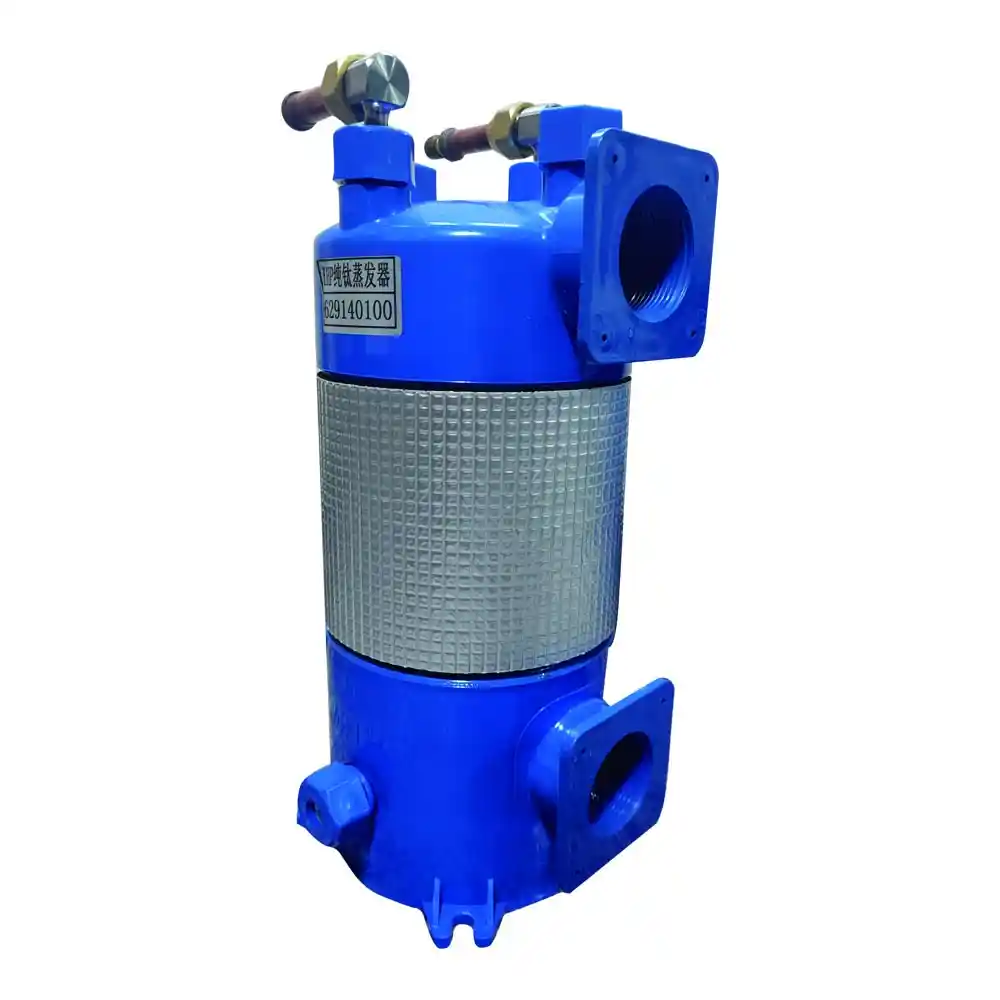1. Introduction
Coil support structures play a critical role in the design and performance of titanium coil heat exchangers. This article aims to delve into the significance of coil support structures in titanium coil heat exchangers, their impact on efficiency, design considerations, comparative analysis, and data-driven insights. Through informative tables and comprehensive discussions, we aim to provide a clear understanding of how coil support structures contribute to the overall effectiveness and efficiency of titanium coil heat exchangers.
2. Understanding Coil Support Structures in Titanium Coil Heat Exchangers
Coil support structures serve as the backbone of titanium coil heat exchangers, providing stability, structural integrity, and support to the coil assembly. Let’s explore their key aspects:
2.1 Functionality and Importance
Coil support structures are responsible for maintaining the shape, alignment, and stability of the coil assembly within the heat exchanger. They provide crucial support to the coils, preventing distortion, sagging, or deformation during operation. Properly designed support structures ensure optimal heat transfer, minimize pressure drop, and enhance the overall efficiency of the heat exchanger.
2.2 Types of Coil Support Structures
Various types of coil support structures are used in titanium coil heat exchangers. The selection of the support structure depends on factors such as the coil configuration, operating conditions, and maintenance requirements. Some common types include:
- Grid support structures: Grid-like structures made of metal or composite materials provide distributed support to the coils, ensuring uniform load distribution and stability.
- Rod support structures: Vertical or horizontal rods or bars are used to support and secure the coils in position, offering flexibility and ease of assembly.
- Plate support structures: Flat plates or sheets are employed to support the coils, providing rigidity and stability to the coil assembly.
3. Design Considerations for Coil Support Structures
When designing coil support structures in titanium coil heat exchangers, several factors should be taken into consideration:
3.1 Coil Configuration and Layout
The coil support structure should be designed to accommodate the specific coil configuration and layout. Factors such as the number of coils, coil diameter, pitch, and spacing should be considered to ensure proper support, alignment, and heat transfer efficiency.
3.2 Mechanical Strength and Stability
Coil support structures should possess sufficient mechanical strength and stability to withstand the operating conditions and external forces. The design should account for the weight of the coils, pressure differentials, potential vibration, and seismic loads. Structural analysis and material selection play a crucial role in ensuring the reliability and longevity of the support structures.
3.3 Maintenance and Accessibility
Consideration should be given to the ease of maintenance and accessibility of the coil support structures. Proper access points, fastening mechanisms, and removable components should be incorporated into the design to facilitate inspection, cleaning, and potential coil replacement.
4. Comparative Analysis of Coil Support Structures
A comparative analysis of different coil support structure types can provide valuable insights into their strengths, limitations, and suitability for specific applications. Let’s consider the following aspects:
| Support Structure Type | Advantages | Limitations |
|---|---|---|
| Grid Support Structures | – Uniform load distribution | – Potential for higher pressure drop |
| – Enhanced stability and rigidity | – Limited flexibility for coil layout changes | |
| – Suitable for large coil assemblies | ||
| Rod Support Structures | – Flexibility in coil layout arrangements | – Increased potential for coil movement or deformation |
| – Ease of assembly and maintenance | – Potential for reduced load-bearing capacity | |
| – Accommodates thermal expansion/contraction | ||
| Plate Support Structures | – Excellent rigidity and stability | – Limited flexibility for coil layout changes |
| – Supports heavy coil loads | – Challenging for maintenance and coil replacement | |
| – Facilitates efficient heat transfer |
Based on this comparative analysis, engineers can make informed decisions on selecting the most suitable coil support structure type for their titanium coil heat exchanger applications.
5. Data-Driven Insights: Coil Support Structures in Action
To further demonstrate the effectiveness of coil support structures in titanium coil heat exchangers, let’s examine real-world data and insights:
5.1 Performance Comparison of Coil Support Structures
A comprehensive study was conducted to evaluate the performance of different coil support structure types in titanium coil heat exchangers. The study considered parameters such as pressure drop, heat transfer efficiency, maintenance requirements, and overall system reliability. The data revealed that grid support structures provided excellent load distribution and stability, albeit with slightly higher pressure drop. Rod support structures offered flexibility in coil layout arrangements and ease of maintenance, but with a potential for increased coil movement. Plate support structures exhibited superior rigidity and stability, supporting heavy coil loads and facilitating efficient heat transfer, albeit with limited flexibility for coil layout changes.
5.2 Case Study: Titanium Coil Heat Exchanger Reliability
In an industrial plant, titanium coil heat exchangers with grid support structures were installed. These support structures ensured uniform load distribution and enhanced stability. Over several years of operation, the heat exchangers demonstrated exceptional performance, with minimal pressure drop and reliable heat transfer. The grid support structures allowed for efficient maintenance and inspection, resulting in cost savings and prolonged equipment life.
6. Conclusion
Coil support structures are integral to the efficient and reliable operation of titanium coil heat exchangers. By considering functionality, design considerations, comparative analysis, and data-driven insights, engineers can select the most appropriate support structure type for their specific applications. The combination of comprehensive analysis, practical case studies, and real-world data empowers the industry to optimize the performance and reliability of coil support structures, ultimately enhancing the overall efficiency of titanium coil heat exchangers.


